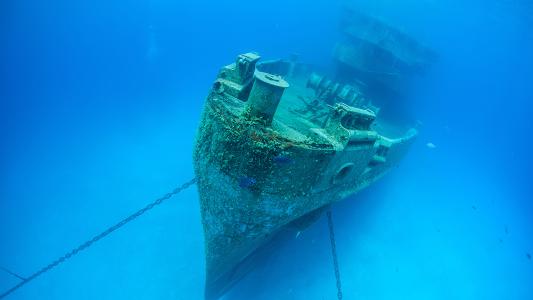Kathy Sullivan is one of the most remarkable explorers alive today.
As a NASA astronaut, she was the first American woman to perform a spacewalk, venturing outside the Space Shuttle Challenger in 1984. Some 36 years later, she just became the first woman to visit the bottom of the ocean, a spot known as the Challenger Deep.
That makes Sullivan the first person of any gender to both walk in space and reach the deepest part of the ocean.
Journey to the Bottom of the Ocean
Sullivan’s interest in the oceans actually predates her time at NASA — while working toward her PhD in geology, she explored the floors of the Pacific and Atlantic Oceans.
Still, the average depth of the ocean is just 2.3 miles. The Challenger Deep is nearly three times deeper, and Sullivan is only the eighth person to ever visit it.
This was an extraordinary day, a once in a lifetime day.
Kathy Sullivan
EYOS Expeditions coordinated Sullivan’s trip to the bottom of the ocean, which she made aboard the Limiting Factor, a deep-sea research submersible developed by Triton Submarines.
She was joined in the two-person vessel by Victor Vescovo, founder of undersea exploration company Caladan Oceanic. The pair spent about an hour and a half taking images of the Challenger Deep before beginning their four-hour journey back to the surface.
Once onboard the Limiting Factors’ mothership, the DSSV Pressure Drop, Sullivan got a chance to jump on a really long-distance call with astronauts currently onboard the International Space Station (ISS).
“As a hybrid oceanographer and astronaut this was an extraordinary day, a once in a lifetime day, seeing the moonscape of the Challenger Deep and then comparing notes with my colleagues on the ISS about our remarkable reusable inner-space outer-spacecraft,” she said in an EYOS blog post.
Challenger Deep vs. Deep Space
Space and the bottom of the ocean are, obviously, two very different environments, but they’re both extremely inhospitable for humans, which makes exploring them difficult.
In May, SpaceX became the first private company to transport humans into space, ferrying two NASA astronauts to the ISS aboard its Crew Dragon.
EYOS appears keen to position the Limiting Factor as the undersea equivalent of the Crew Dragon — it tagged SpaceX in a tweet about Sullivan’s trip and mentioned the company in its blog post:
The recent launch of SpaceX’s Crew Dragon highlighted the exciting potential of private companies contributing to the technological advancement of space flight with a reliable, reusable vehicle. The commercially-rated — a first for an ultra deep-diving submersible — Limiting Factor is a privately funded hadal exploration vehicle that has transformed our ability to explore the deep ocean in the same manner.
Whether it lands the company any contracts — government or otherwise — for exploring the bottom of the ocean remains to be seen.
But for Sullivan, who went on to head up the National Oceanic and Atmospheric Administration after leaving NASA, the day marked a merging of her two life passions — and further confirmed her position as a truly exceptional explorer.
We’d love to hear from you! If you have a comment about this article or if you have a tip for a future Freethink story, please email us at tips@freethink.com.
